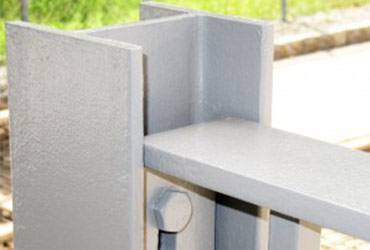Essential Tips For Conductive Coating Thickness Inspections
In industries where precision and reliability are non-negotiable, the measurement of conductive coating thickness plays a pivotal role in maintaining the integrity and functionality of critical components. Conductive coatings, utilized for their ability to transmit heat and electricity, are indispensable in protecting against hazards such as lightning strikes or ice formation on aircraft. However, ensuring these coatings maintain their protective properties requires precise thickness inspections. A&A Coatings, a leader in thermal spray coatings and industrial finishings, shares essential tips for conducting these inspections effectively.
Choose Quality NDT Equipment
The foundation of accurate conductive coating thickness inspection is the use of high-quality Non-Destructive Testing (NDT) equipment. Precision instruments designed specifically for this purpose can detect even the slightest deviations in thickness early on, preventing the progression of potentially catastrophic issues. Opting for cheaper, inferior equipment may seem cost-effective in the short term but can lead to overlooked flaws that necessitate costly repairs down the line. Investing in quality NDT equipment is investing in the long-term safety and efficiency of your operations.
Utilize a Modular Measuring System
Given the variety of conductive coatings and substrates, selecting the right measuring system is crucial. A Modular Measurement System (MMS) is highly recommended for its adaptability and precision. This system not only automates the measurements of conductivity and thickness but also customizes the inspection according to the specific type of coating and substrate material. With interchangeable modules designed for different coating materials—such as galvanized nickel on non-ferrous metals or copper coating—an MMS offers unparalleled flexibility and accuracy in conductive coating thickness inspections.
Implement Eddy Current Testing for Non-Magnetic Coatings
Eddy Current Testing (ECT) is an effective technique for measuring the thickness of conductive coatings, particularly when the top layer is non-magnetic. ECT utilizes electromagnetic induction to detect and measure variations in conductive properties, making it an invaluable tool in the arsenal of thickness inspection methods. It’s especially suited for non-magnetic coatings on metals like copper or zinc, providing accurate measurements without physical contact that could potentially damage the coating.
Tailor Your Approach to the Coating
Understanding the specific characteristics of the conductive coating in question is essential for choosing the most appropriate inspection technique. Not all coatings are created equal, and what works for one may not be suitable for another. Factors such as the coating material, substrate type, and the environmental conditions to which the coating will be exposed all influence the choice of inspection method. Tailoring your approach to these variables ensures that the inspection process is both effective and efficient.
Thickness of Conductive Coatings
The integrity of conductive coatings is paramount for the safety and functionality of many industrial applications. By following these essential tips for conductive coating thickness inspections, companies can ensure that their coatings perform as intended, safeguarding against potential hazards and extending the lifespan of their components. A&A Coatings remains committed to providing industry-leading solutions and expertise in conductive coating applications, helping clients achieve the highest standards of quality and reliability in their projects.



